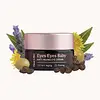What's inside
What's inside
 Key Ingredients
Key Ingredients

No key ingredients
 Benefits
Benefits

 Concerns
Concerns

 Ingredients Side-by-side
Ingredients Side-by-side

Water
Skin ConditioningGlycerin
HumectantDimethicone
EmollientRhamnose
HumectantIsohexadecane
EmollientAlcohol Denat.
AntimicrobialPropanediol
SolventIsopropyl Isostearate
EmollientVinyl Dimethicone/Methicone Silsesquioxane Crosspolymer
Cetyl Alcohol
EmollientDimethicone/Vinyl Dimethicone Crosspolymer
Skin ConditioningBehenyl Alcohol
EmollientNylon-12
PEG-100 Stearate
CI 77163
Cosmetic ColorantCI 77891
Cosmetic ColorantStearic Acid
CleansingStearyl Alcohol
EmollientArachidyl Alcohol
EmollientCetearyl Alcohol
EmollientCetearyl Glucoside
EmulsifyingCaffeine
Skin ConditioningNeohesperidin Dihydrochalcone
MaskingPalmitic Acid
EmollientPhenoxyethanol
PreservativeAdenosine
Skin ConditioningAmmonium Polyacryloyldimethyl Taurate
Emulsion StabilisingDisodium Stearoyl Glutamate
CleansingDisodium EDTA
Caprylyl Glycol
EmollientCitric Acid
BufferingSynthetic Fluorphlogopite
Acrylamide/Sodium Acryloyldimethyltaurate Copolymer
Emulsion StabilisingEthylhexyl Hydroxystearate
EmollientPolysorbate 80
EmulsifyingParfum
MaskingWater, Glycerin, Dimethicone, Rhamnose, Isohexadecane, Alcohol Denat., Propanediol, Isopropyl Isostearate, Vinyl Dimethicone/Methicone Silsesquioxane Crosspolymer, Cetyl Alcohol, Dimethicone/Vinyl Dimethicone Crosspolymer, Behenyl Alcohol, Nylon-12, PEG-100 Stearate, CI 77163, CI 77891, Stearic Acid, Stearyl Alcohol, Arachidyl Alcohol, Cetearyl Alcohol, Cetearyl Glucoside, Caffeine, Neohesperidin Dihydrochalcone, Palmitic Acid, Phenoxyethanol, Adenosine, Ammonium Polyacryloyldimethyl Taurate, Disodium Stearoyl Glutamate, Disodium EDTA, Caprylyl Glycol, Citric Acid, Synthetic Fluorphlogopite, Acrylamide/Sodium Acryloyldimethyltaurate Copolymer, Ethylhexyl Hydroxystearate, Polysorbate 80, Parfum
Water
Skin ConditioningAloe Barbadensis Leaf Juice
Skin ConditioningCarthamus Tinctorius Seed Oil
MaskingGlycerin
HumectantHelianthus Annuus Seed Oil
EmollientStearic Acid
CleansingGlyceryl Stearate
EmollientCetyl Alcohol
EmollientStearyl Alcohol
EmollientAlgae Extract
EmollientTaraxacum Officinale Extract
Skin ConditioningCarbomer
Emulsion StabilisingXanthan Gum
EmulsifyingSodium Carbomer
Emulsion StabilisingNiacinamide
SmoothingSqualane
EmollientPalmitoyl Tripeptide-1
Skin ConditioningCaffeine
Skin ConditioningTocopheryl Acetate
AntioxidantEscin
TonicButylene Glycol
HumectantAlcohol
AntimicrobialLecithin
EmollientCentella Asiatica Extract
CleansingPalmitoyl Tetrapeptide-7
Skin ConditioningPolysorbate 20
EmulsifyingSodium Hyaluronate
HumectantPotassium Phosphate
BufferingPhenoxyethanol
PreservativeGlyceryl Stearate Citrate
EmollientLavandula Angustifolia Oil
MaskingEthylhexylglycerin
Skin ConditioningGeranium Maculatum Extract
TonicCamellia Sinensis Leaf Extract
AntimicrobialWater, Aloe Barbadensis Leaf Juice, Carthamus Tinctorius Seed Oil, Glycerin, Helianthus Annuus Seed Oil, Stearic Acid, Glyceryl Stearate, Cetyl Alcohol, Stearyl Alcohol, Algae Extract, Taraxacum Officinale Extract, Carbomer, Xanthan Gum, Sodium Carbomer, Niacinamide, Squalane, Palmitoyl Tripeptide-1, Caffeine, Tocopheryl Acetate, Escin, Butylene Glycol, Alcohol, Lecithin, Centella Asiatica Extract, Palmitoyl Tetrapeptide-7, Polysorbate 20, Sodium Hyaluronate, Potassium Phosphate, Phenoxyethanol, Glyceryl Stearate Citrate, Lavandula Angustifolia Oil, Ethylhexylglycerin, Geranium Maculatum Extract, Camellia Sinensis Leaf Extract
 Reviews
Reviews

Ingredients Explained
These ingredients are found in both products.
Ingredients higher up in an ingredient list are typically present in a larger amount.
Caffeine is most associated with coffee, tea, and cacao. In skincare, it helps with calming inflammation and is rich in antioxidants.
While caffeine is used to treat cellulite and and dark circles, further studies are needed to prove this. It has been believed to help with these skin conditions due to its ability to dilate blood vessels and increase blood flow.
Some studies are looking into caffeine's ability to protect against UV rays.
Learn more about CaffeineCetyl Alcohol is a fatty alcohol. Fatty Alcohols are most often used as an emollient or to thicken a product.
Its main roles are:
Though it has "alcohol" in the name, it is not related to denatured alcohol or ethyl alcohol.
The FDA allows products labeled "alcohol-free" to have fatty alcohols.
Learn more about Cetyl AlcoholGlycerin is already naturally found in your skin. It helps moisturize and protect your skin.
A study from 2016 found glycerin to be more effective as a humectant than AHAs and hyaluronic acid.
As a humectant, it helps the skin stay hydrated by pulling moisture to your skin. The low molecular weight of glycerin allows it to pull moisture into the deeper layers of your skin.
Hydrated skin improves your skin barrier; Your skin barrier helps protect against irritants and bacteria.
Glycerin has also been found to have antimicrobial and antiviral properties. Due to these properties, glycerin is often used in wound and burn treatments.
In cosmetics, glycerin is usually derived from plants such as soybean or palm. However, it can also be sourced from animals, such as tallow or animal fat.
This ingredient is organic, colorless, odorless, and non-toxic.
Glycerin is the name for this ingredient in American English. British English uses Glycerol/Glycerine.
Learn more about GlycerinPhenoxyethanol is a preservative that has germicide, antimicrobial, and aromatic properties. Studies show that phenoxyethanol can prevent microbial growth. By itself, it has a scent that is similar to that of a rose.
It's often used in formulations along with Caprylyl Glycol to preserve the shelf life of products.
Stearic Acid is a fatty acid. It is an emollient, emulsifier, and texture enhancer.
As an emollient, stearic acid helps soften skin. It aids the skin's protective barrier by preventing water loss. It also provides a gentle cleansing effect without stripping away natural oils.
Stearic acid may also be used to enhance the texture of products. It can add volume and stabilize ingredients such as water and oil. This can help water and oil ingredients from separating.
Sources of stearic acid include animal or vegetable fats/oils such as coconut or shea. It can be naturally found in butter, cocoa butter, shea butter, vegetable fats, and animal tallow.
This ingredient may not be Malassezia folliculitis, or fungal-acne safe.
Learn more about Stearic AcidStearyl Alcohol is a type of fatty alcohol from stearic acid. It is a white, waxy compound used to emulsify ingredients.
Fatty Alcohols are most often used as an emollient or to thicken a product. Emollients help soothe and hydrate the skin by trapping moisture.
They are usually derived from natural fats and oils and therefore do not have the same drying or irritating effect as solvent alcohols. FDA allows products labeled "alcohol-free" to have fatty alcohols.
Learn more about Stearyl AlcoholWater. It's the most common cosmetic ingredient of all. You'll usually see it at the top of ingredient lists, meaning that it makes up the largest part of the product.
So why is it so popular? Water most often acts as a solvent - this means that it helps dissolve other ingredients into the formulation.
You'll also recognize water as that liquid we all need to stay alive. If you see this, drink a glass of water. Stay hydrated!
Learn more about Water